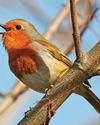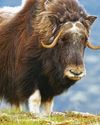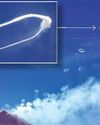
Life has been swimming, flying, crawling and growing on this planet for more than three billion years. Humans have only been spreading out across the world over the last 200,000 years. Yet in this short stretch of time, people have reached almost every corner. Join us as we go in search of the worlds’ emptiest, wildest areas.
What is a wilderness?
A wilderness is a place that is still untouched by humans. To most scientists, this means not only that no one lives there, but that the habitat is free from human impact – the unique mix of plants and animals that grow there is not influenced by people.
Wildernesses are also zones that people protect to preserve the unique ecosystem (the community of living things and their environment) and keep it wild. Dave Foreman, an environmental scientist, calls them a “self-willed land” – an area where what happens is due to nature alone, and not people.
Where the wild things are
It’s hard to find places with no trace of human activity. It wasn’t always this way of course – a thousand years ago there were only 310 million people on the planet. Today there are more than 8 billion. Scientists estimate that 77% of all land and 87% of the sea has now been changed by human activity. So, where are the world’s last remaining wildernesses?
Esta historia es de la edición Issue 71 de The Week Junior Science+Nature UK.
Comience su prueba gratuita de Magzter GOLD de 7 días para acceder a miles de historias premium seleccionadas y a más de 8500 revistas y periódicos.
Ya eres suscriptor ? Conectar
Esta historia es de la edición Issue 71 de The Week Junior Science+Nature UK.
Comience su prueba gratuita de Magzter GOLD de 7 días para acceder a miles de historias premium seleccionadas y a más de 8500 revistas y periódicos.
Ya eres suscriptor? Conectar

SUGAR RUSH
Join the candy craze as Claire Karwowski studies the sugary science of sweets.

Wildlife watch
Stevie Derrick shows you what to spot in nature this month

The Sixth Sense
Could humans have more than five senses?

Catherine Heymans
Meet the starry-eyed astronomer who loves backyard stargazing.

WORLD OF WHIFFS
Stevie Derrick follows her nose to track down the world's grossest stinks and nastiest niffs.

Dogs can understand names of objects
Humans enjoy talking to their dogs. If you have a four-legged friend of your own, you might have taught them to respond to commands like \"sit\" and \"stay\".

Smoke rings in the sky
In April, videos were filmed of Mount Etna, a volcano on the Italian island of Sicily, puffing what looked like smoke rings into the sky.

Huge gold nugget found
A gold nugget that could be the largest ever found in England was recently put up for auction. Metal detectorist Richard Brock discovered the nugget on farmland during an organised expedition in Shropshire last year.

Evolutionary tree shows birds in a new light
Researchers have produced the most detailed evolutionary tree of birds ever.

The largest plane to ever fly
Take a first look at the mighty Radia WindRunner aircraft